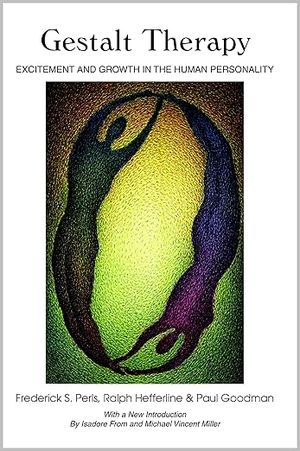
Gestalt Therapy
Ever felt life is more than just moments? Enter 'gestalt,' a German term for the complete experience—when everything 'clicks.' Like a dancer synchronized with music, Gestalt therapy explores how we engage with the world, blending past and present into the now. Embrace the flow.
What is Gestalt Therapy?
Gestalt Therapy is focused on fostering self-awareness and personal growth, it emphasizes the present moment while revealing how past experiences still shape our current feelings, uncovering emotions that may have been suppressed. By acknowledging and accepting ownership of our experiences, we can develop greater agency and autonomy in our lives. Gestalt therapy shift us from reacting to our past to actively engaging with our present, promoting deeper understanding and personal empowerment.
The Four Pillars of Gestalt Therapy:
Phenomenology: Gestalt therapy is deeply rooted in philosophy, emphasizing the importance of immediate experience and recognizes that personal experience is key to self-empowerment.
Dialogical Relationship: The therapeutic relationship in Gestalt therapy depends on the therapist's genuine presence, authenticity, and attention to our needs and internal processes, creating an environment of open communication and validation.
Field Theory: Explores the dynamic interplay between us and our environment, allowing the therapist to grasp how we make sense of our experiences.
Experimentation: A key aspect of Gestalt Therapy involves experimenting within sessions—exploring our unconscious communication through verbal and nonverbal cues, examining repetitive patterns, and trying out new behaviors to integrate into daily life.
The Main Goals of Gestalt Therapy:
In Gestalt therapy, the present moment takes center stage, focusing on our immediate thoughts, feelings, and actions to unlock real change. By tuning into the here and now, we can see how our environment and inner world shape our well-being, urging us to take ownership of our experiences and approach life’s challenges proactively.
Using "I" statements in Gestalt Therapy:
A powerful tool in this journey is the use of ‘I’ statements. Instead of saying, “She never listens to me and it drives me crazy,” try, “I feel frustrated when she doesn’t listen because it makes me feel ignored.” This shift encourages personal responsibility for our emotions, making it easier to communicate our needs and build stronger relationships.
As we embrace this responsibility and develop a clearer sense of self, our interactions naturally improve. Gestalt therapy teaches us to navigate the fluid boundaries of connection and withdrawal—learning when to engage and when to step back. It helps us respond effectively to our environment and enhance our relationships with others.
Gestalt Therapy Session: Let’s unpack
What Issues Does Gestalt Therapy Address?
By emphasizing awareness and personal responsibility, Gestalt therapy provides a framework for individuals to explore and understand their experiences more deeply. Some of the key issues that Gestalt therapy can effectively address include:
Anxiety and general stress: Gestalt therapy helps clients identify triggers through experiential exercises and mindfulness practices, individuals can learn to recognize and address the physical, emotional, and cognitive manifestations of anxiety and stress.
Depression and mood disorders: Gestalt therapy can help individuals gain new perspectives on their emotional states and develop more adaptive coping strategies. Through experiential techniques and dialogue, individuals can explore their emotions more deeply.
Low self-esteem and lack of confidence: Gestalt techniques, such as the empty chair exercise, can help individuals confront and integrate different aspects of themselves, leading to improved self-awareness and a stronger sense of self.
Relationship problems and interpersonal conflicts: By examining how individuals relate to others in their environment, Gestalt therapy can help improve communication skills, boundary-setting, and overall relationship satisfaction.
Identity exploration: Due to the holistic nature of Gestalt therapy, it makes it particularly suited for individuals seeking to explore and integrate various aspects of their identity, including cultural, sexual, and personal dimensions.
Negative self-talk: Gestalt therapy's emphasis on awareness can help individuals recognize and challenge their negative internal dialogues, fostering more positive and supportive self-communication.
Gestalt therapy goes beyond simply addressing symptoms. It focuses on the present moment and an individual's relationship with their environment, encouraging a deep exploration of one's thoughts, feelings, and behaviors.
How is The Past Dealt With in Gestalt Therapy?
Gestalt therapy, while primarily focused on the present moment, acknowledges the influence of past experiences on current behaviors and perceptions. Its approach to dealing with the past is unique, emphasizing present-centered exploration, addressing "unfinished business," and using experiential gestalt therapy techniques like the empty chair method.
By addressing the past through the lens of present experience, this therapeutic approach helps individuals gain new insights, resolve lingering conflicts, and develop a more integrated sense of self across time.
The Benefits of Gestalt Therapy:
Gestalt Therapy offers several key benefits for personal growth and well-being. It enhances self-awareness and control, helping individuals gain mastery over their emotions, build resilience, and better navigate life's challenges. Gestalt therapy also improves communication skills and deepens emotional insight, empowering individuals to express themselves authentically and build stronger relationships. Additionally, its focus on mindfulness and presence helps people become more attuned to both their inner world and surroundings, leading to a deeper understanding of oneself and a more fulfilling life experience.
Through these combined benefits, Gestalt Therapy enables individuals to develop a greater tolerance for life's ups and downs while fostering personal growth and self-discovery.
A Limitation of Gestalt Therapy Is That:
While Gestalt therapy can be effective for many, it does have some limitations.
Compared to more structured approaches like Cognitive Behavioral Therapy (CBT), Gestalt therapy has less empirical evidence supporting its effectiveness. Gestalt therapy focus on experiential processes rather than direct symptom management may not suit everyone, particularly those seeking more structured, goal-oriented treatment.
The fluid, open-ended nature of Gestalt therapy, with its emphasis on body language and emotions, can feel uncomfortable for individuals who prefer a more structured therapeutic approach. Despite these limitations, Gestalt therapy can still foster significant personal growth and positive change for those who engage with it and appreciate its unique methodology.
The Most Common Gestalt Therapy Techniques:
Empty Chair & Two-Chair Techniques:
Imagine sitting across from an empty chair, your heart racing as you prepare to have a conversation with... well, no one. Welcome to the Empty Chair technique, a powerful Gestalt Therapy method that might just change the way you view yourself and others. The empty chair technique invites you to engage in a dialogue with an absent person or even a part of yourself, all represented by that unassuming empty chair.
The Two-Chair techniquegoes beyond the traditional empty chair technique by encouraging you to actively embody different roles. It's not just talking to an imaginary person - it's becoming that person for a moment. Think of it as stepping into someone else's shoes, but in a much more literal and immediate way. The magic of the tow-chair technique lies in its ability to unlock hidden insights. While physically changing positions, you might suddenly understand why your partner always leaves the toothpaste cap off, or why your boss seems so stressed all the time.
Exaggeration Technique:
In the Gestalt therapeutic space our body language and movements are essential. Imagine you're sitting with your therapist, and they notice something interesting about you. Maybe it's the way you're fidgeting with your hands or how your eyebrows scrunch up when talking about a certain topic. Your therapist might say, "Hey, I noticed you're doing this thing with your hands. Can you do that again, but even more exaggerated?". By asking you to repeat and amplify these behaviors, your therapist is helping you tune into your emotions in real-time.
The goal? Gestalt therapy aims to help you connect the dots between your physical actions and your inner emotions. It's like becoming a detective of your own feelings! This exercise can help you:
Spot patterns in your behavior you might not have noticed before
Understand why you might feel "stuck" in certain situations
Gain a deeper awareness of your emotions and how they show up in your body
Another particularly appealing technique of Gestalt therapy is the utilization of creative arts such as painting, sculpting and drawing. These activities can foster heightened awareness, presence and emotional process due to their non-verbal form which can foster the access of emotions, memories or inner conflicts.








